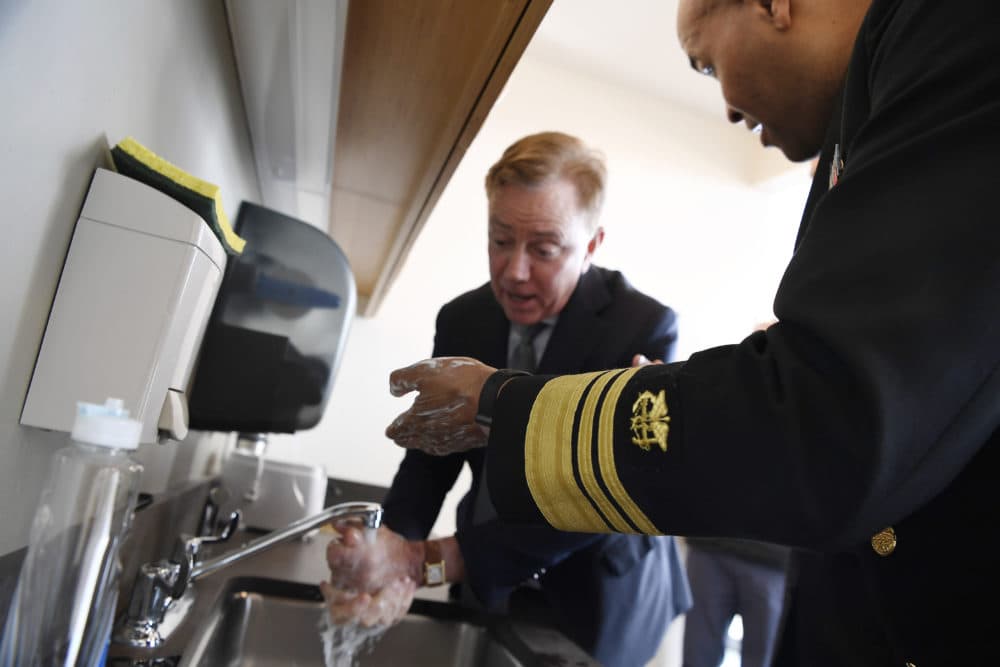Advertisement
Connecticut’s Coronavirus Testing Surges, Gov. Says, As Does Its Unemployment Rate
Resume
Connecticut has significantly increased its testing capacity for COVID-19 this week, Gov. Ned Lamont says.
“As of a week ago, we weren't able to test more than 20 or 30 people a day. And we were focused mainly on those who are very sick in the hospitals,” Lamont says. “Now, it's a week later we are able to do hundreds of tests a day.”
The state has begun drive-through testing outside area hospitals to speed up the testing process. Lamont says local hospitals also have testing capabilities. Still, he says, it’s likely that the amount of positive tests that come back still pales in comparison to the true number of cases in Connecticut.
“Testing tells us maybe preliminarily how many people are infected,” he says. “And let's say we have 68 positives, but it's probably 100 times that number when you think about the number of people who aren't tested.”
But as the national and state economy plummets, Connecticut residents are facing skyrocketing rates of unemployment amid an unstable market. On Monday, the state received 10,000 unemployment claims. On Tuesday, it received 12,000 more.
“It's worth noting that in a recession, we usually have 5,000 new claims a week,” Lamont says.
He ascribes these numbers to widespread business, restaurant and other closures in an attempt to staunch the spread of the coronavirus.
“Look, when we shut down restaurants and bars, along with New York and New Jersey and Rhode Island and our neighboring governors, that's 100,000 people. Our hospitality industry is another 100,000 people,” Lamont says.
He says the state must provide these newly unemployed workers with a social safety net, including paid sick leave.
“Right now we're telling folks, not only those who had a job and lost, but also those who are self-employed and independent contractors, ‘We're gonna be able to take care of you for the near term,’ ” he says.
Moving forward, Lamont emphasizes the state will need to focus on overcoming shortages of supplies and health care workers necessary for treating the coronavirus.
To deal with the lack of available nurses after several were exposed to the virus, the governor suggests testing currently quarantined nurses, accelerating the coursework of nursing students and bringing retired nurses back into the workforce.
As for medical supplies, Lamont said the state is prioritizing where its masks, ventilators and other apparati go, but that the onus to fix the international shortage should fall on the federal government.
“This is a place we really need the national government to step up. I mean, I look at the number of B-52s we're able to build on very short order on the eve of World War II,” he says. “I think we can figure out how to mass produce protective gear now.”
Jill Ryan produced and edited this interview for broadcast with Tinku Ray. Lynsey Jeffery adapted it for the web.
This segment aired on March 18, 2020.